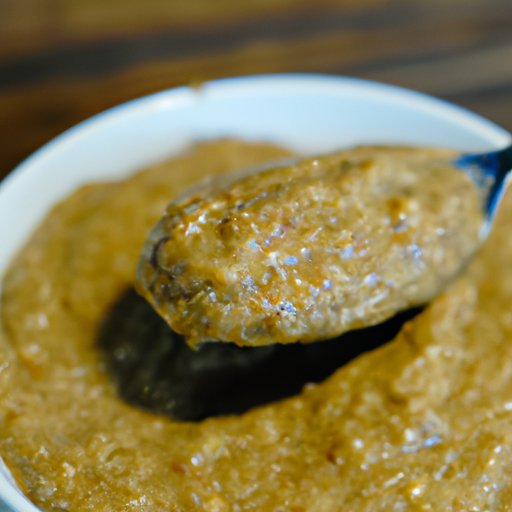I. Introduction
Roux is an essential base ingredient in many dishes, from gravies to sauces to stews. It’s a simple mixture of fat and flour, yet it plays a crucial role in bringing out the flavors of a dish. If you’re a fan of hearty, flavorful recipes, then learning how to make roux is a must. In this article, we’ll take you through everything you need to know, from the basics of making roux from scratch to its varied uses and applications.
II. A step-by-step guide on how to make roux from scratch
The first step in mastering the art of making roux is knowing the ingredients you’ll need. You’ll typically require equal parts flour and fat, which could be anything from butter or vegetable oil to bacon fat or lard. To start whisk the two together over medium heat. It’s important to keep stirring continuously while the roux heats. The mixture will initially be lumpy, but as it cooks for 5-10 minutes, it will begin to change in texture and color. Once it turns a golden blonde color, turn the heat down to low and let the roux continue to cook for a few more minutes. Remove from the heat, continuing whisking for 1-2 minutes while it cools.
III. The science behind roux: How different heating times affect its color and flavor
The color and flavor of roux is often a result of the cooking time and heat at which it’s made. The Maillard reaction, which is responsible for the browning of food, is what gives roux its distinct flavor. Cooking the roux for a longer period of time and at high heat will result in a darker roux, which will lend your dishes a more robust flavor. On the other hand, a lightly cooked roux will have a milder flavor and color. Knowing the different heating times and temperatures can help you adjust the flavor of your roux to complement the dish you’re making.
IV. Roux in the Cajun and Creole cuisine: History, variations, and traditional uses
Roux has been a staple in Cajun and Creole cuisine for centuries. These cultures often use a darker roux than in classic French cooking and use it in famous dishes such as gumbo and jambalaya. Gumbo, for example, typically uses a dark roux to thicken the dish instead of okra, as traditional African gumbo did. Historically, dark roux were used to stretch meat, as they were cheaper. Mixing roux with rouille resulted in a sauce used to accompany fish at Lent. The use of roux has not only become a cultural tradition, it has become a symbol in the cuisine.
V. Vegan alternatives to using butter in making roux
Butter is the traditional ingredient to use in making roux. However, those following a vegan diet may want to opt for a different fat source. Some suitable vegan alternatives include vegetable oil, margarine, vegan butter, or coconut oil. Use the same quantity of fat as you would butter, and cook the roux in the same way described earlier. Keep in mind that depending on the fat you’re using, the taste of the roux may vary slightly. It’s important to test the roux as you cook and adjust accordingly to find the taste you desire.
VI. Recipes that use roux as a base, and tips on how to properly incorporate it into the dish
There are countless recipes that call for roux as their base ingredient. Some well-known examples include classic macaroni and cheese and smooth turkey gravy. Ensuring that roux is properly incorporated into the dish is key for creating a smooth, rich flavor. One trick is to add the roux slowly and let it fully cook before adding more liquid. This technique will create a smooth consistency without clumps. Plan on your roux taking at least 10 minutes to cook thoroughly, possibly more.
VII. The versatile uses of roux in both savory and sweet dishes, and how to adjust the recipe to fit your needs
Roux isn’t only a versatile ingredient in savory dishes; it can also be used in sweet ones, such as in custards or to make white sauces for desserts. To create a lighter-colored roux, cook the mixture over low heat until it turns a light golden color. It’s essential to adjust your roux accordingly to the recipe you’re following – a dark roux may not be suitable for a light dessert sauce, for example. Don’t be afraid to experiment by mixing different types of roux to create your own unique flavor profiles for dishes.
Conclusion
Hopefully, this comprehensive guide has provided you with the knowledge and confidence to master the art of making roux. No matter your cooking level, you can start making roux from scratch and incorporating it into your favorite recipes. Remember to experiment with different cooking times, fats, and flavors to find the perfect roux to complement your dish.
